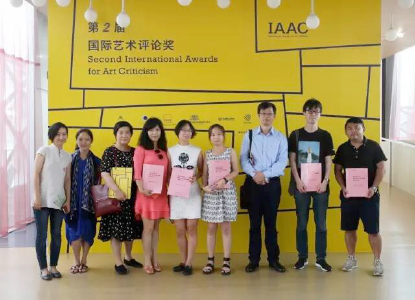
The 2nd International Awards for Art Criticism (IAAC) are currently calling publicly for papers around the world, with the contents of art criticism on contemporary art exhibitions. Papers shall be submitted by the date of October 15, 2015. In order to let more people understand and participate in the writing of art criticism, a series of lectures on art criticism is to be presented by distinguished guests with different status, educational background and practical experience invited by Shanghai 21st Century Minsheng Art Museum (M21) successively. This article reviews "Discussion on Art Criticism", the first round of IAAC lectures held on July 25, selecting some statements of the guests for further discussion and study by the readers.
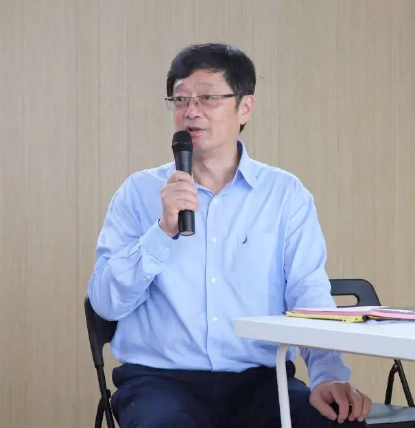
Zhou Bing: art criticism cannot be "poor"
The IAAC invite juries from all over the world and place art criticism on an open and transparent platform to be reviewed. And seeing from the award-winning pieces, it is quite just and objective. By holding the IAAC, I see the light and hope for art criticism, but also "poorness" in the art criticism circle.
Art criticism has not reached an ideal status. The Chinese character "贫", which means "poorness" in English, can be divided into two Chinese characters “分”and“贝”, which means dividing the money, resulting in less money and poorness. Meanwhile, “贫” has another meaning, with equal connotation as “平”, which means plainness with simple conception, deficient contents and unattractive statement. Currently, art in general is developing fast, but the situation of art criticism looks bleak.
Based on the diversified development of Chinese culture, how to reflect on the current art phenomenon has bothered many of us for long. When the contemporary art has just started to develop, our society has just experienced the end of farming culture. People still look things around with the sight of farming culture. One piece of work represents the age, the creator and the outlook of the society. It deserves us to consider how to conduct culture criticism in diversified culture and how to criticize art.
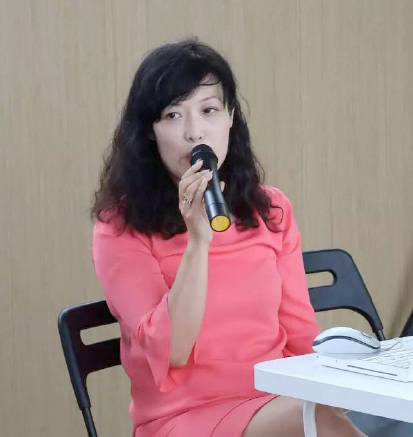
Xu Jiahe: reader and writer of art criticism
How to judge an article of art criticism is good or not? First, it can raise the resonance of the readers. Second, the value judgment of the works shall be accurate. Third, the writer shall be with exquisite writing skill. Generally speaking, a good article shall bear the writer’s feelings all the time, which is based on the writer’s familiarity with the current situation of the art circle and fully understanding of the art history.
An art critic connects artists to the society, recommending artistic works to the society and presenting opinions of the public to the artists. On the one hand, creation and exploration of the artist shall be recognized. On the other hand, it requires art critics to reflect and adjust the art works deviating from the course. Throughout the art history, it is always the critics who have pushed forward the development of art by reflecting on the society. In the development process of Chinese contemporary art, a large number of art critics have emerged such as Li Xianting, Li Xiaoshan and Gao Minglu.
Creation in the writing field is much harder than that of in the visual one. However, I firmly believe that if art criticism keeps an independent attitude and fully comprehends the art history and Chinese contemporary art situation, it can move forward constantly.
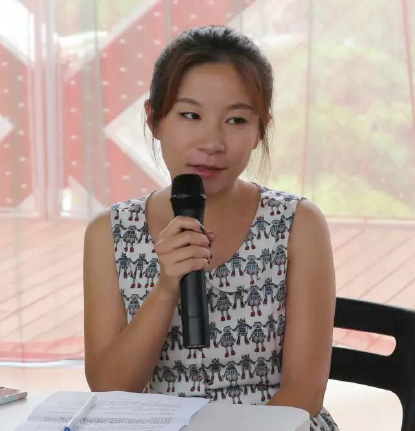
Zhang Hanlu: writing and curating
Writing and curating can co-exist and be supplementary. A basic point in the first place is a good curator shall have a thorough understanding on the works. So does a good article of art criticism. We do not request a good curator to be best friend with the artists, but at least he/she can be on behalf of the artists to present their works. The art writers shall open a way in the increasingly narrower channel. Under such circumstance, he/she needs to better understand the works or even much deeper than the curator.
As the methods for curating and criticism are increasingly innovative, there is a motive we shall never forget, that is, to be responsible for the acceptance of the works and how the readers view them. These two identities function in two different stages. Curation functions before the formation of the exhibition while criticism functions after the exhibition. This kind of responsibility is not a positioning action. Like what I just said, it is an expanded action.
Besides, the two identities also have things in common. As a curator, I mostly focus on objective details, for example, whether the exhibition wall labels are in place, whether the sight is affected by the space, whether the light, building structure and the path are appropriate. I believe all these details can influence the acceptance of the exhibition, which shall also been noticed by the critics.
Critics shall bear the courage of being against the tide, maintaining the sharpness and putting down the authority of critics as well. I think art is obliged to and has the ability to resist the gathering of power. So does art criticism.
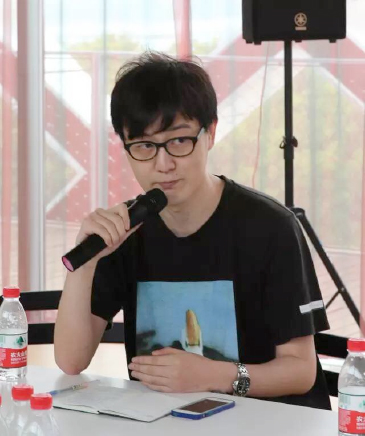
Liu Xujun: art and criticism shall get divorced
There is mutual demand between art and criticism, which is however based on imagination. It’s just like a couple living a seemingly harmonious life together but feeling unhappy, then why not just get divorced?
In terms of effectiveness, the golden age for criticism is the age from Baudelaire to Surreal Dada. Art becomes an element in the global community. With the commercial influence getting stronger, a global art industry emerges, directly leading the marginalization of art criticism. At the very beginning, the importance of criticism simply lies its communicative value, which makes criticism has the speaking right to art. However, art is getting much more commercial and gradually controlled by the market. As a result, communication no longer depends on the media and the media today cannot be compared with paper media of Baudelaire's age.
Because of the development of all kinds of broadcasting stations, network, TV and self-media, the share of paper media has slid down in the whole communication. Therefore, the importance of criticism in paper media is bound to be weakened. As for the critical writings I can see in the magazines and newspapers, I’d rather call them lyric prose, expository writing and guidance for exhibitions with a little bit terms but no viewpoints. I deeply doubt how to relate an article without viewpoints to academy and whether it can be called criticism.
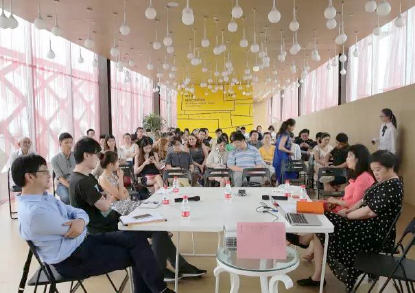
Concluding speech by Professor Ling Min
Professor Ling Min, the board member of IAAC, concluded at the end of the lecture. According to her point of view, the IAAC expect to build a platform for media and public institutions to see those creative young people. It is hard to find them in the sea of so many and the awards just provide such a platform to gather them together.
Articles in the exhibition preface and picture albums are all very important criticism. As one wants to know the aim of the album, its purpose or its interpretation, a short and accurate critical article is quite important.
When an artwork draws the high attention from international media, articles written by critics thus become very significant, which can let the world know Chinese artists and the status quo of Chinese art much better. This cannot be measured by money. Some international media often want people with excellent writing and good English skills. Why they need recommendation and such kind of articles? Because it is difficult to find a person who is familiar with China and can write excellent and objective articles.
Everyone shall know a situation, namely, our artists, even some famous ones, are not quite good at English. When they cannot communicate in their mother language and the international media want to know their situation, then critics play an important role in this particular art age. This is also the reason why we provide such awards to give young people a platform. We not only just select them, but also give those good critics a good chance to let us hear their voice, which is quite important. Artists have many opportunities to exhibit their works, but critical articles can only be published in a few magazines. If they do not know the editors, their articles might be difficult to be published. Now we offer them an opportunity to show their talent and help them to grow.
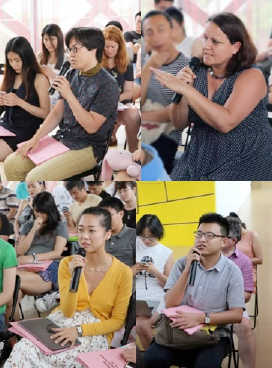
After the speeches by the guests, the audience asked questions actively and had a heated discussion with the guests.
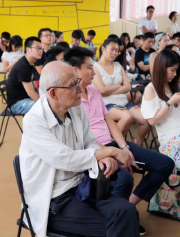
There were not only the young but also the elderly, which shows that the wide extent of audience of art criticism.